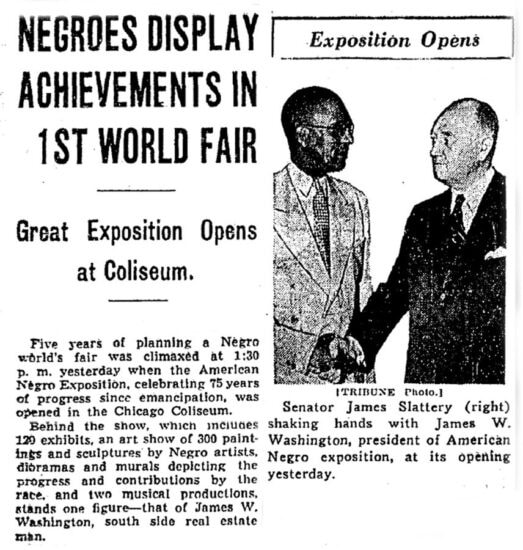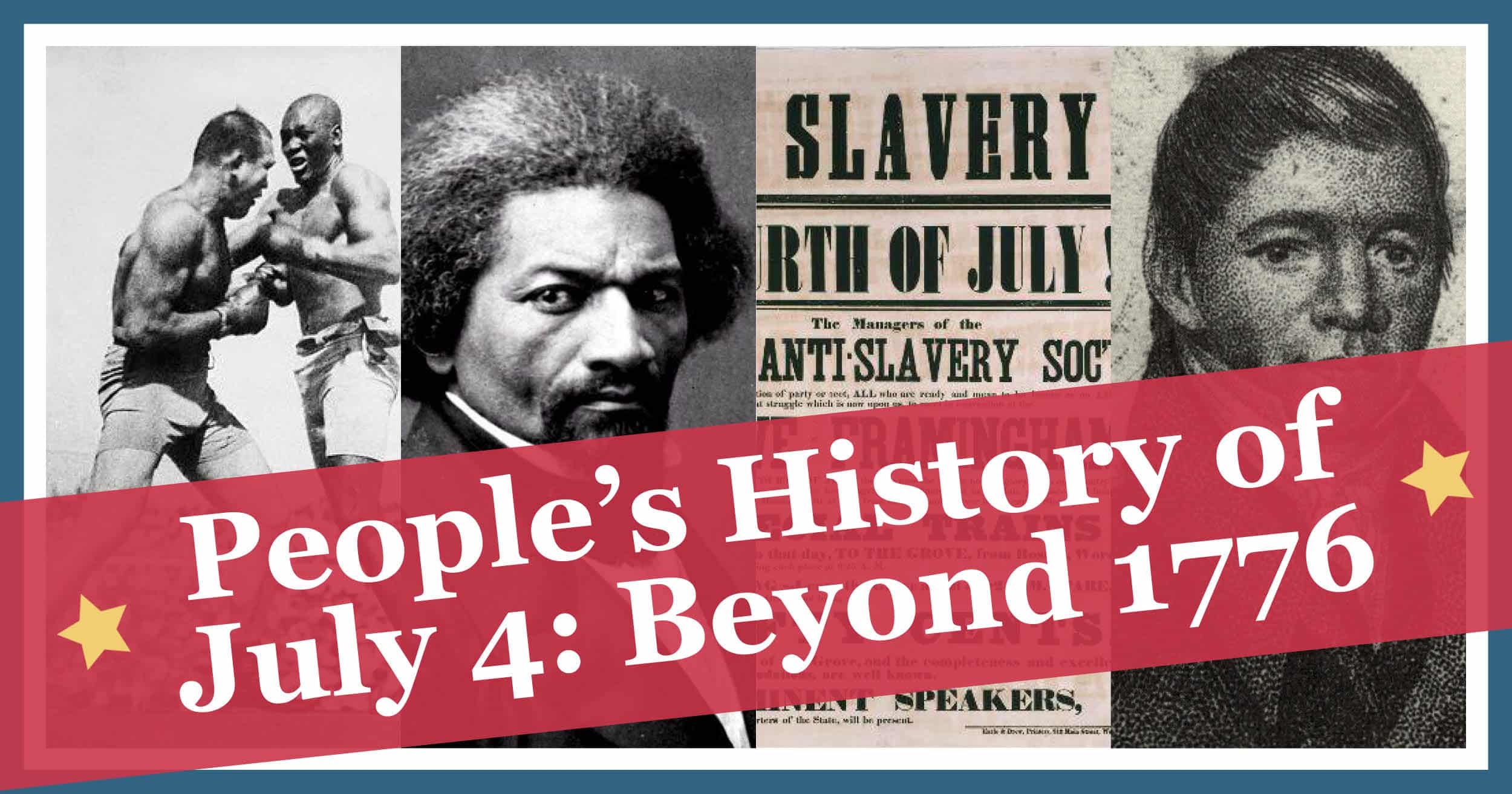To celebrate the 75th anniversary of the ending of slavery in the United States, the Black World’s Fair, also known as the American Negro Exposition, was held at the Chicago Coliseum from July 4 through September 2, 1940.
According to the Smithsonian’s National Museum of African American History and Culture:
![A poster for the American Negro Exposition at the Chicago Coliseum. The image on the poster is of a male standing behind a female. They have their heads turned to their right and have their arms raised. In their right hands they are holding a book and a gear. In their left hands they are holding a document and a broken chain. The background is a pink mountain-scape with Abraham Lincoln’s face at center with a blue sky and pink clouds. Agricultural tools are at the bottom. Black text at the top center of the poster reads: [AMERICAN NEGRO EXPOSITION.] Brown text at the center of the poster reads: [1865] and [1940.] Blue text on a black background at the bottom of the poster reads: [CHICAGO COLISEUM / JULY 4 TO SEPT. 2.] Small black text at the bottom of the poster reads: [AMERICAN NEGRO EXPOSITION HEADQUARTERS, 3632 SOUTH PARKWAY, CHICAGO.]](https://s36500.pcdn.co/wp-content/uploads/2023/09/American-Negro-Exposition-tdih-359x550.jpg)
Poster for the American Negro Exposition in Chicago. Illustrated by Robert Savon Pious, 1940. Source: National Museum of African American History & Culture
The event recognized two important occasions: the 75th anniversary of the end of the Civil War and the abolition of slavery and the anniversary of the Emancipation Proclamation. Featuring the contributions of African Americans to American life since 1865, the Exposition was considered the first Negro World’s Fair and the first time that African Americans had the opportunity to present themselves and their stories to the world.
There were 120 exhibits on display, comprised of over 300 paintings and drawings, 33 dioramas, and much more. Admission was a quarter. Numerous local and national organizations and businesses participated. While the event itself only lasted for a few months, it took years to organize and plan.
As William Tyre writes in Chicago’s Forgotten World’s Fair: The American Negro Exposition of 1940:
The Exposition officially opened on July 4, 1940 when President Roosevelt pressed a button in his Hyde Park, New York home to turn on the lights. The keynote speaker was Mayor Kelly who noted, in part:
“The nation pays a debt of gratitude to the Negroes today. Not alone for their contributions to the arts and sciences, not alone to the good and great names that stand out in the book of American achievement, but to the great mass of 14 million Negroes who help to form the backbone of American democracy.
“They deserve the good life, because in the greater part, they choose to be the good citizens. They deserve the rewards of democracy because they appreciate so well the blessings of liberty. They have given much, and they are entitled to much.” [Continue reading.]
Tyre continued:
The Exposition closed on September 2, 1940 with an elaborate program featuring the Democratic nominee for Vice President, Henry A. Wallace, as the keynote speaker (he promised a non-political speech and was elected Vice President two months later). Entertainment included the J. Wesley Jones chorus of 1,000 and selections by Paul Robeson. Organizers had hoped two million people would visit the Exposition, but the exact number of attendees is unknown. [Continue reading.]
Additional Resources
Library of Congress exhibition The African-American Mosaic: Cavalcade of the American Negro
Chicago’s Forgotten World’s Fair: The American Negro Exposition of 1940 by William Tyre








Twitter
Google plus
LinkedIn